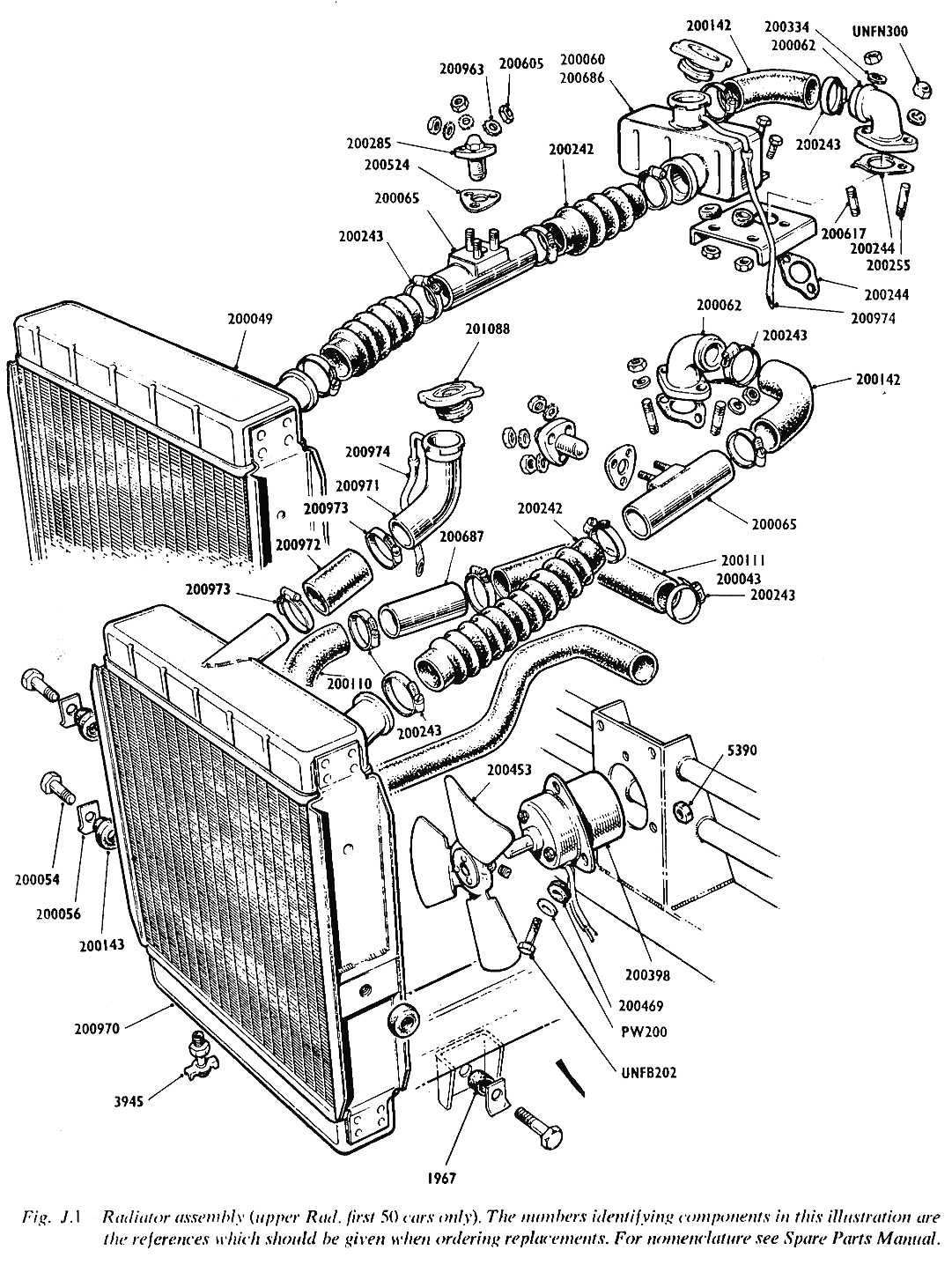Section J (26/12/08 )
COOLING SYSTEM
J.1 General
J.2 Removing and replacement of the radiator
J.3 Frost precautions
J.4 Draining
|
|
||
|
J1 GENERAL The engine is cooled by the circulation of water through the water jackets which surround the combustion chambers and cylinders. The cooling water is circulated by the thermo-sypbon system. A centrifugal type water pump which is located at the right hand side of the cylinder block front, assists the thermo-syphon action. The system is pressurised to operate at 7 lb/sq. in. (0,492 kg/sq. cm.) and is controlled by a spring-loaded rubber seal which is fitted under the filling cap. The capacity of the system is 2,25 imperial gallons (18 pints. 11,6 litres or 2,6 U.S. gallons). It is preferable that only soft water is used (c.g. rainwater if available). When the engine is cold fill to approximately 1 inch from the top of the filler. Overheating may be caused through improper carburettor adjustment, ignition too far retarded, excessive carbon deposits in exhaust and inlet manifold, or insufficient water. To avoid the latter the water in the radiator should be checked before undertaking long journeys. A 7 P.S.I. Pressure Cap is fitted to the radiator allowing the engine to be operated at slightly higher temperatures without boiling. When removing the cap, turn slowly, or if the system is very hot allow to cool. Features The forward mounted radiator is of the fin-and-tube type. The filling cap is mounted high, on a curved tube extending upwards and rearwards from the header tank. This is for ease of access above the engine block. Conventional flexible flow and return hoses connect the radiator and block. The top flow hose is shaped for offside entry at the top front of the cylinder block. J2 REMOVING AND REPLACEMENT OF THE RADIATOR Raise the bonnet lid, open drain tap, remove the radiator filler cap and drain. If anti-freeze has been used, drain into a clean container for re-use. Detach the top and bottom radiator hoses. The top hose can be disconnected at the header tank by removal of a jubilee clip and the bottom hose at the outlet pipe at the cylinder block. |
Unscrew three bolts securing the radiator to the brackets which are attached to the front cross member. The radiator can then be lifted out. To replace the radiator, reverse the procedure detailed above. J3 FROST PRECAUTIONS In bad weather conditions (e.g. frost, low temperatures) it is necessary to protect the cooling system from damage by using anti-freeze mixture or by draining away all water. A good proprietary make of anti-freeze should be used in accordance with the manufacturers instructions. Salt and other substitutes should on no account be used. Glycerine or Ethylene-Glycol solutions are satisfactory, and are readily availabie from Dealers. They must be mixed with water in the recommended proportions. Temperature Control The coolant inlet housing accommodates a thermostatically controlled 'mushroom' valve, which opens to permit free thermal circulation of the coolant fluid. This opens at 80°C. (176°F.) The top coolant flow hose has a separate thermostat, which controls an electrical switch wired to the fan motor. The fan and motor are mounted immediately behind the radiator and the control switch automatically cuts in at 85°C. (185°F.) and out at 75°C. (167°F.). A temperature gauge is fitted to the instrument dashboard, to the right, beneath the steering column. Normal operating temperature is 85°C. (185°F.). J4 DRAINING There is a drain cock beneath the radiator and one at the rear offside of the cylinder block - just above the starter motor. The filling cap should be removed to avoid risk of air-lock, when draining. Periodic flushing of the system is recommended and, if removed for overhaul, it is good practice to reverse-flush the radiator and block when this is practicable.
|
|
